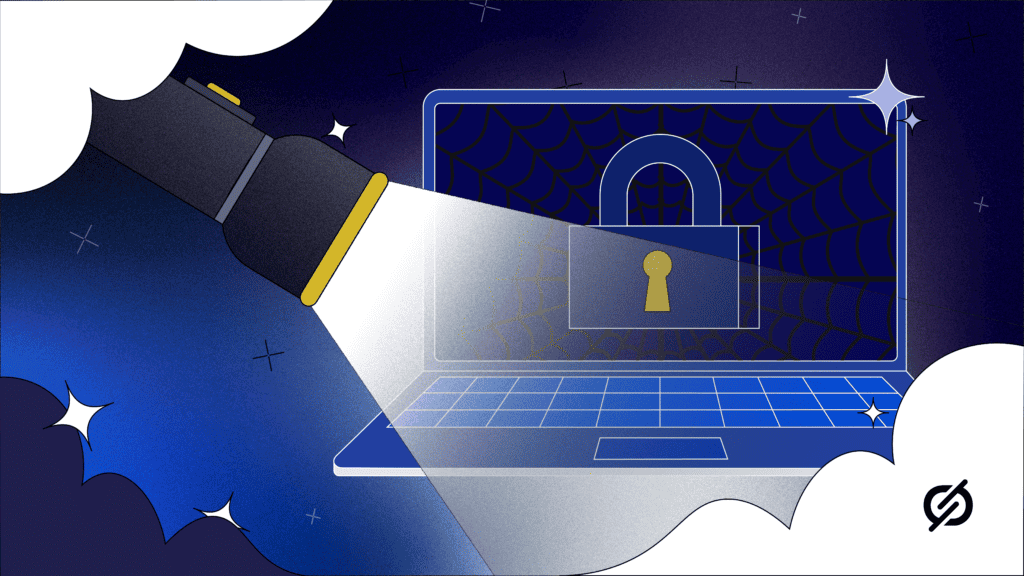Let's Shine a Light into the Dark - Cyber Threat Intelligence
Ever feel like you are being watched? In Cybersecurity, the feeling of being watched is a good thing! You need eyes on your IT landscape 24/7 to ensure any emerging threats are squashed before they become problematic. You also need to know what is going on in the areas you can’t see that well, such as the Dark Web, as you never know what is lurking just out of sight regarding your cybersecurity!
Cyber Threat Intelligence Overview
It is time to fortify your organisation against an ever-evolving threat landscape. We don’t mean to sound too dark here (did you see the pun?), but in reality, this area of the Web can be full of threats to you and your core assets. Our Cyber Threat Intelligence service provides visibility into underground operations while maintaining anonymity, offering actionable intelligence on your cyber threats. This service includes monitoring for breached systems on the Dark Web, identifying leaked credentials and compromised accounts, and providing targeted investigations for specific information like email addresses and IPs. This proactive approach aids in quickly responding to and minimising risks, accelerating incident response, and helping organisations stay informed on current cyber threats.
What is the Dark Web?
The Dark Web is a part of the internet not indexed by standard search engines and requires specific software, configurations, or authorisation to access. It's known for its anonymity, which can be used for legitimate privacy protections and illicit activities. Regarding cybersecurity, the Dark Web is significant because it often serves as a marketplace for illegal activities, including the sale of stolen data, hacking tools, and other illicit services.
Trading Leaked Personal Data
An example highlighting its importance in cybersecurity is the trading of leaked personal data. Cybercriminals often use the Dark Web to sell information obtained from data breaches, such as credit card details, passwords, and personal identities. This illegal trade can lead to identity theft, financial fraud, and other serious cybercrimes. Thus, monitoring the Dark Web is crucial for organisations and individuals to understand the threats and potentially identify if their data has been compromised.
Yes, you read that right…. Your data could already be within the Dark Web, and it is time that you knew what you were up against.
Future Trends in the Dark Web
It seems bleak and worrying when we look at what is happening within the Dark Web… Several key trends have emerged as of late 2023 and looking into 2024.
Stealer Logs:
According to Webz, there's been an increase in the trading of stealer logs, which are obtained by infostealer malware. These logs contain sensitive data like usernames, passwords, and browser information, posing significant risks for data security and identity theft. Dark web marketplaces have become hubs for trading these stolen credentials.
Malicious Use of Generative AI:
Cybercriminals are exploiting new Large Language Models (LLMs) for malicious activities, such as crafting convincing phishing emails, generating exploit code, and discovering hacking sites and vulnerabilities. This trend showcases the dark side of transformative AI technology, where models like ruGPT or DarkLLaMa operate without the ethical constraints of mainstream models.
Cyber Extortion and Malware-as-a-Service:
There's a growing trend of cyber extortion, driven by increased extortion exposure attacks discovered by LMG Security. Additionally, malware-as-a-service options enable criminals with limited programming skills to engage in cybercrime, highlighting the need for robust security measures.
We know how important it is to shine a light on all areas of vulnerabilities and weaknesses within your cybersecurity protocols and to future-proof your cybersecurity due to these emerging changes and trends. It also comes with many myths and scaremongering; in reality, it is just another area you must be aware of when ensuring you are secure within your cybersecurity processes.
Common Myths about the Dark Web
Here are three common myths about the Dark Web, along with the truth behind them:
Myth: Only Hackers Can Access the Dark Web
Accessing the Dark Web is quite straightforward. It generally requires the use of the Tor Browser and an Onion address. The technology is user-friendly, and accessing the Dark Web doesn't require advanced hacking skills. The challenge lies in maintaining anonymity and navigating safely within it.
Myth: The Dark Web Provides Perfect Anonymity
While the Dark Web is designed for privacy and anonymity, perfect anonymity is not guaranteed. Users need to take active steps to protect their identity. There are various ways through which personal information can be leaked, and sophisticated tools like Tails, in addition to Tor, are often recommended for better security.
Myth: Only Crime Happens on the Dark Web
The Dark Web is not exclusively used for criminal activities. While illegal transactions and content exist, the Dark Web also hosts legal activities. It's used for various purposes that require anonymity, such as journalism, private communication, and activism.
These myths highlight common misconceptions about the Dark Web, emphasising the need for a nuanced understanding of this part of the internet. It's important to acknowledge that while the Dark Web can be used for illicit purposes, it also ensures online privacy and freedom of expression.
Shining a Light on the Shadows
It is true, isn’t it? When you shine a light into the shadows, you remove the fear of what could be there, and our Cyber Threat Intelligence service is designed to do just that. Bring clarity and understanding of all aspects that could impact your cybersecurity safety. You need to be in the know, and with this service, you will receive timely alerts on cyber threats to your organisation. Allowing you to quickly respond and minimise risks, identify exposed data, and accelerate incident response.
Are you ready to shine a light on the Dark Web? We are waiting for you to connect at Core to Cloud; you can discuss this service with one of our team members here.
Frequently Asked Questions (FAQs)
- How does Cyber Threat Intelligence differ from traditional cybersecurity measures?
- Cyber Threat Intelligence focuses on proactive monitoring and timely alerts, providing a more dynamic and informed defence than traditional measures.
- Is it necessary for small businesses to invest in Cyber Threat Intelligence?
- Yes, small businesses are also at risk of cyber threats, and investing in Cyber Threat Intelligence is crucial for their protection.
- What steps can individuals take to enhance their cybersecurity on a personal level?
- Individuals can enhance cybersecurity by regularly updating passwords, using multi-factor authentication, and being cautious about sharing personal information online.
- How often should organisations conduct Dark Web monitoring?
- Regular monitoring is essential. The frequency can vary based on the organisation's size and the sensitivity of the data it handles.
- Can Cyber Threat Intelligence prevent cyberattacks, or is it more about mitigation?
- While it can significantly reduce the risk of cyberattacks through proactive measures, complete prevention is challenging due to the evolving nature of cyber threats.
















